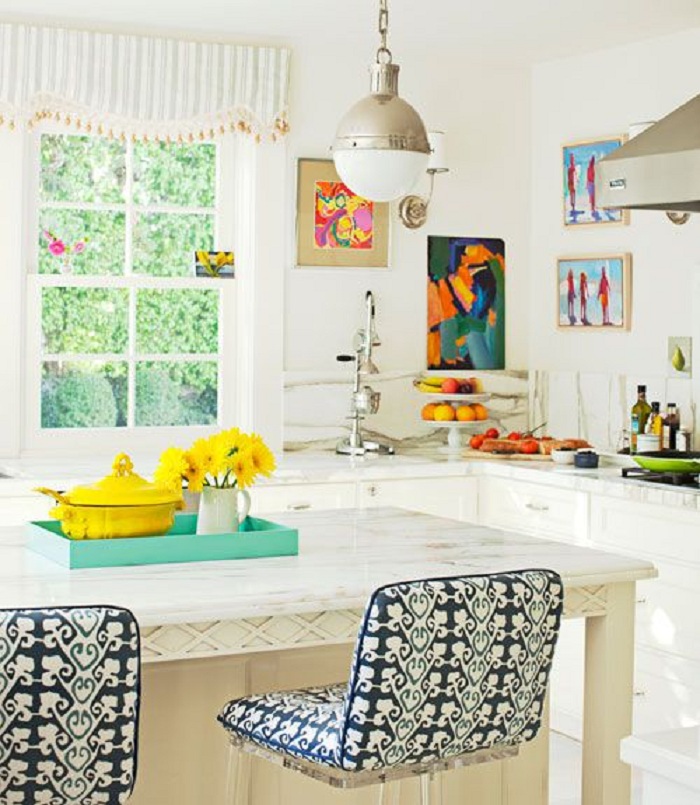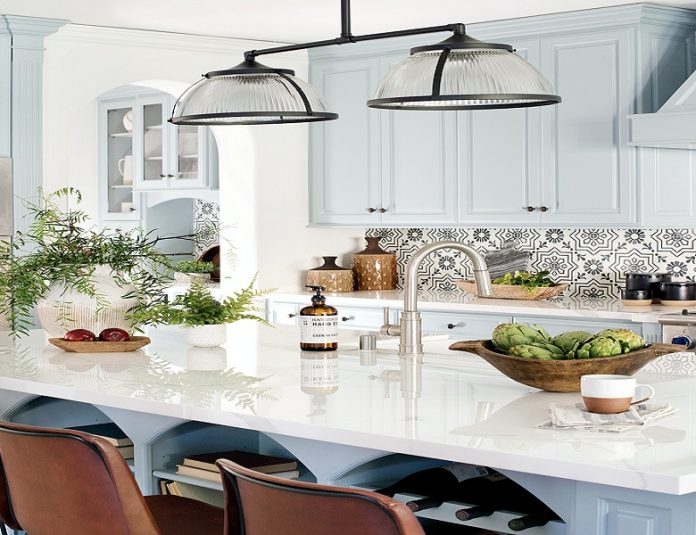Watch any design show or flip through any home magazine, and you’re likely to see a familiar finish in a perfectly sunlit kitchen: marble countertops. Given its undeniable beauty and strength, marble has long been a viable option for this important room. And yet, in recent years, it seems as though marble countertops are as synonymous with a kitchen as a sink that runs and an oven that works.
“Many designers and homeowners favor marble,” Meredith Barclay, merchant countertops at The Home Depot, says. “It’s a clean, bright, and classic look that will bring a level of elegance to most kitchen spaces.”
As a type of metamorphic rock that’s generally not foliated (AKA not comprised of layers of stone), quality marble is often made of either calcium carbonate or magnesium carbonate. These components contribute to marble’s overall durability, but can also be susceptible to acids that can scratch or dull the surface. “Like with any natural stone, it’s not indestructible,” Barclay continues. “Over time, and without proper care, the countertop could etch or discolor.”
It’s always good to know as much information as possible, like the above, before embarking on a task as large as a home remodel that includes marble countertops. Kitchen renovations can cost between 10 and 15 percent of the total value of a home, Barclay says, so she encourages customers to determine the goals of the proposed changes—like increased counter space and a more modern style, for instance—before taking the plunge. Barclay notes, too, that marble can cost between $55 to $100 per square foot, and the exact cost depends on the color, quantity, and source of the stone.
Nevertheless, if all of those design shows and magazine features have made marble countertops a must-have in your dream kitchen, then here’s everything else you need to know about selecting and maintaining these coveted surfaces.
Choose Your Marble Countertops Wisely
There are hundreds of variations of marble in a full spectrum of colors—from blacks and grays to even reds and greens—and every slab of marble comes with its own unique hues. “Even the popular white hues can vary in different lighting and veining, just as you see in white paint hues and undertones,” Barclay says. Marble’s aforementioned issue with acids generally makes white the wisest choice for a countertop installation, because the shade is less likely to show the etching and scratches that can occur.

After you’ve settled on a color choice for your marble, it’s important to notice a slab’s details while shopping. Pay particular attention to its veining—and where those veins end—to create a seamless look throughout your kitchen. It’s best to get as long as a slab as proportions permit for continuous veining, or to closely match the look of separate pieces with a strategic cut. A cross-cut piece of marble contains softer veins that appear to fan outward, while a vein-cut piece has a more defined linear appearance.
At The Home Depot, Barclay says, the Home Services team can help ensure that these marble selections are as clean as possible, with each piece having a mirrored effect. The installation team will work from the outside in on your countertops to determine that each piece is flush as well as level, she notes, and a color-matched epoxy will be applied to the seams.
Protect Your Marble Countertops During Everyday Use
“Regardless of type of countertop, most damage is caused by hot appliances or pans and knives and staining agents,” Barclay notes. Once your marble countertops are ready for use, Barclay says that the best way to maintain them is to use protective tools. Large cutting boards and thick pot holders can guard the surface against cuts and temperature changes, and natural cleaners and mild dish soap on a soft cloth can wipe up messes without leaving abrasions.
“You may need to reseal your countertop after a certain amount of time, perhaps a year or so,” she says. “As a general test, add a few drops of water to the surface of the countertop. If the water absorbs into the stone under three to four minutes, it may need sealing.”
By understanding how to select and care for marble countertops, this common wish-list item can soon become a standout feature of your kitchen—no matter how you choose to enjoy it. “Marble is also great for the homeowner who loves to bake since the stone is typically cool or below room temperature,” Barclay adds. “It’s perfect for working doughs and creams.”
Source: www.housebeautiful.com








































